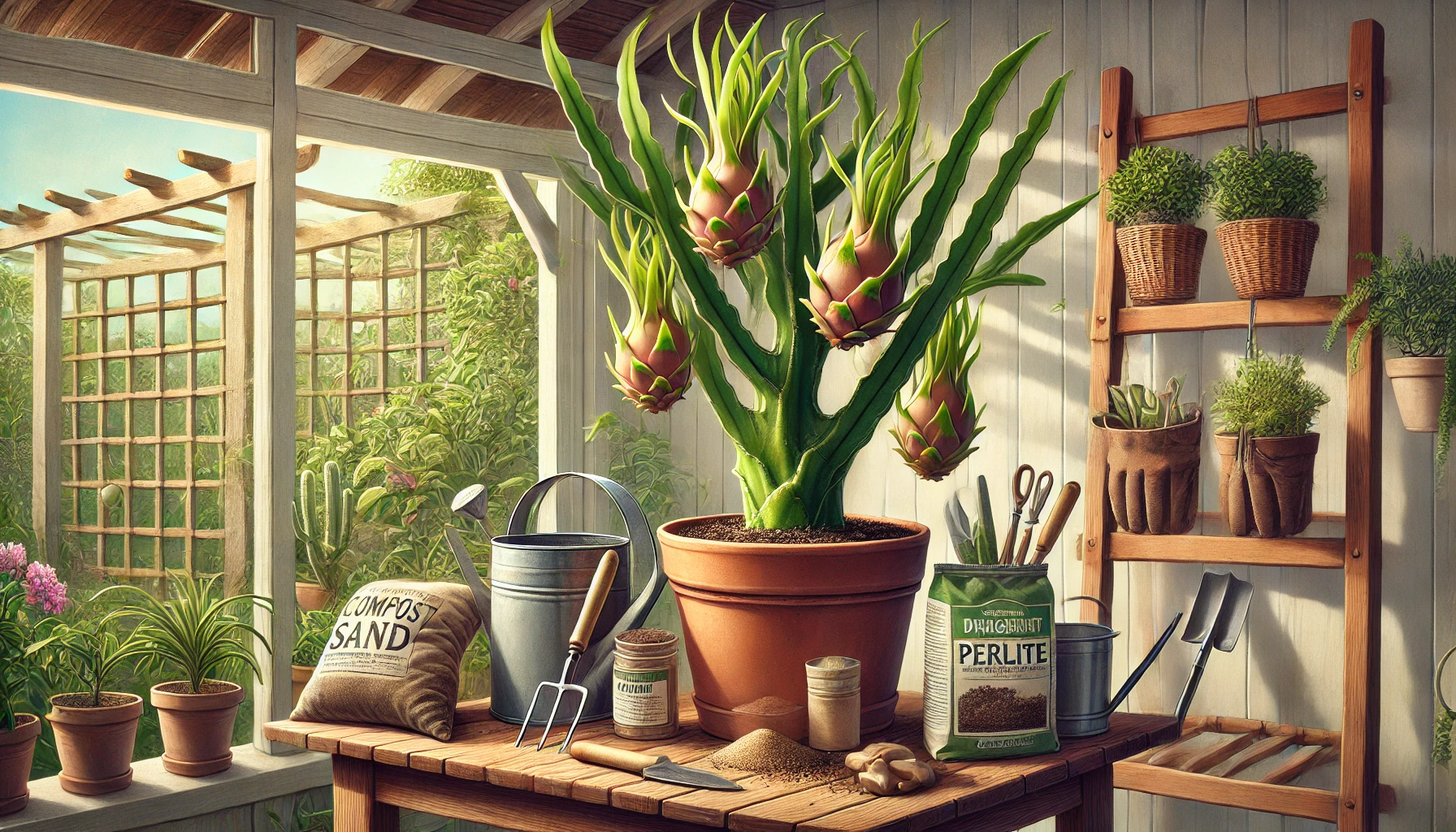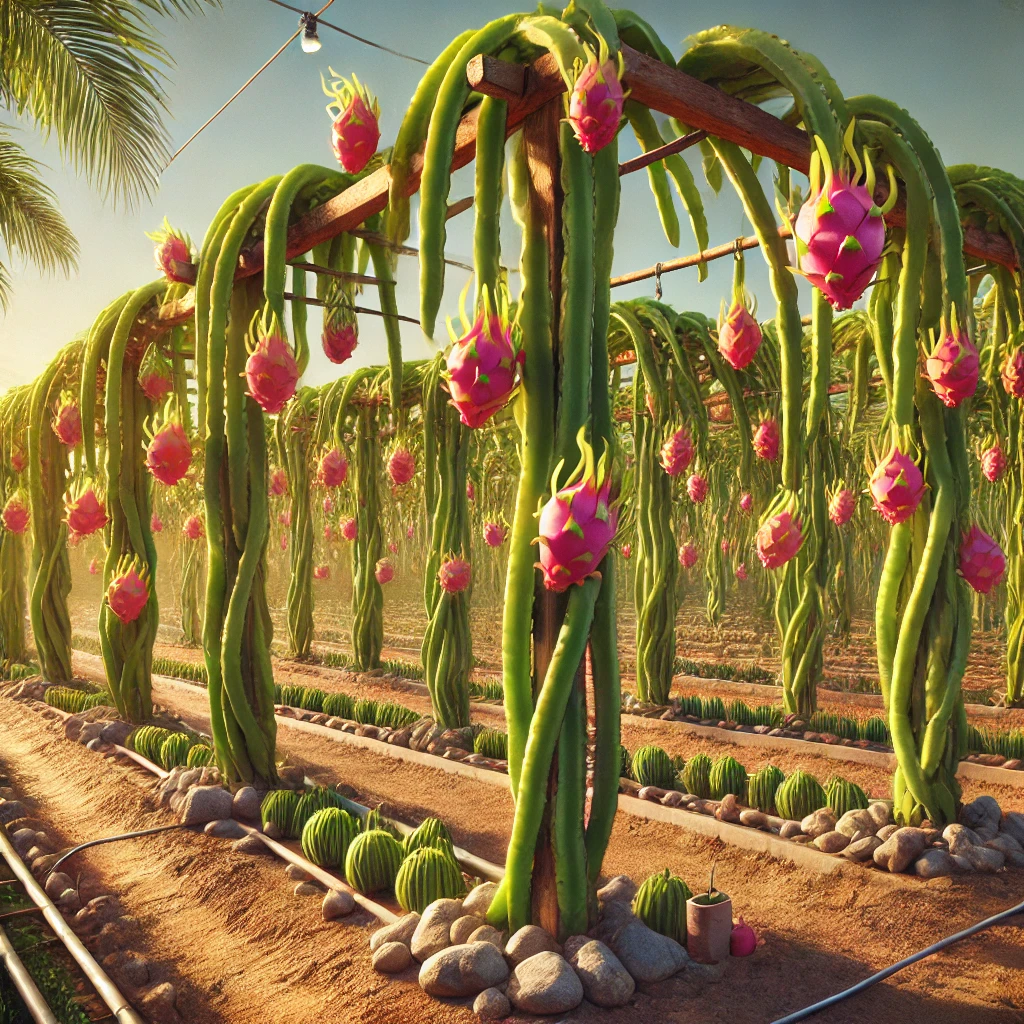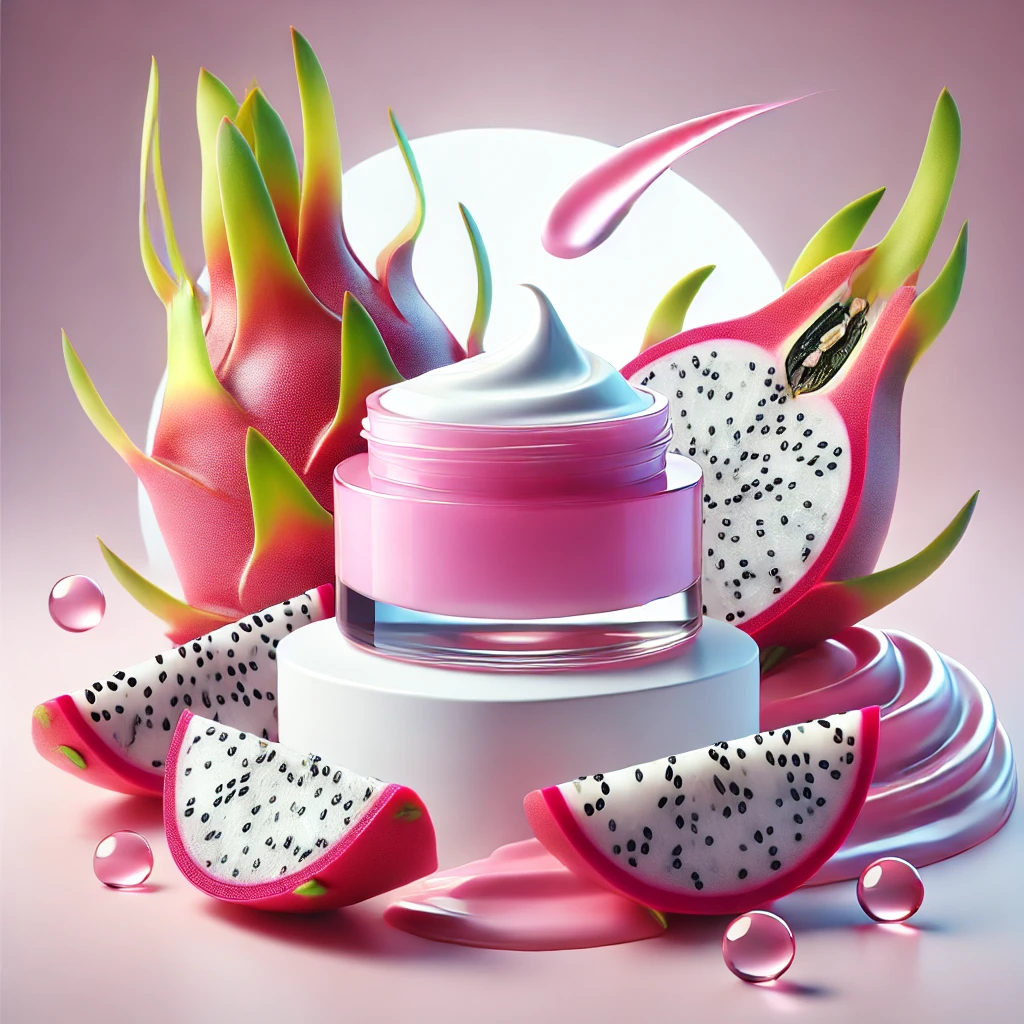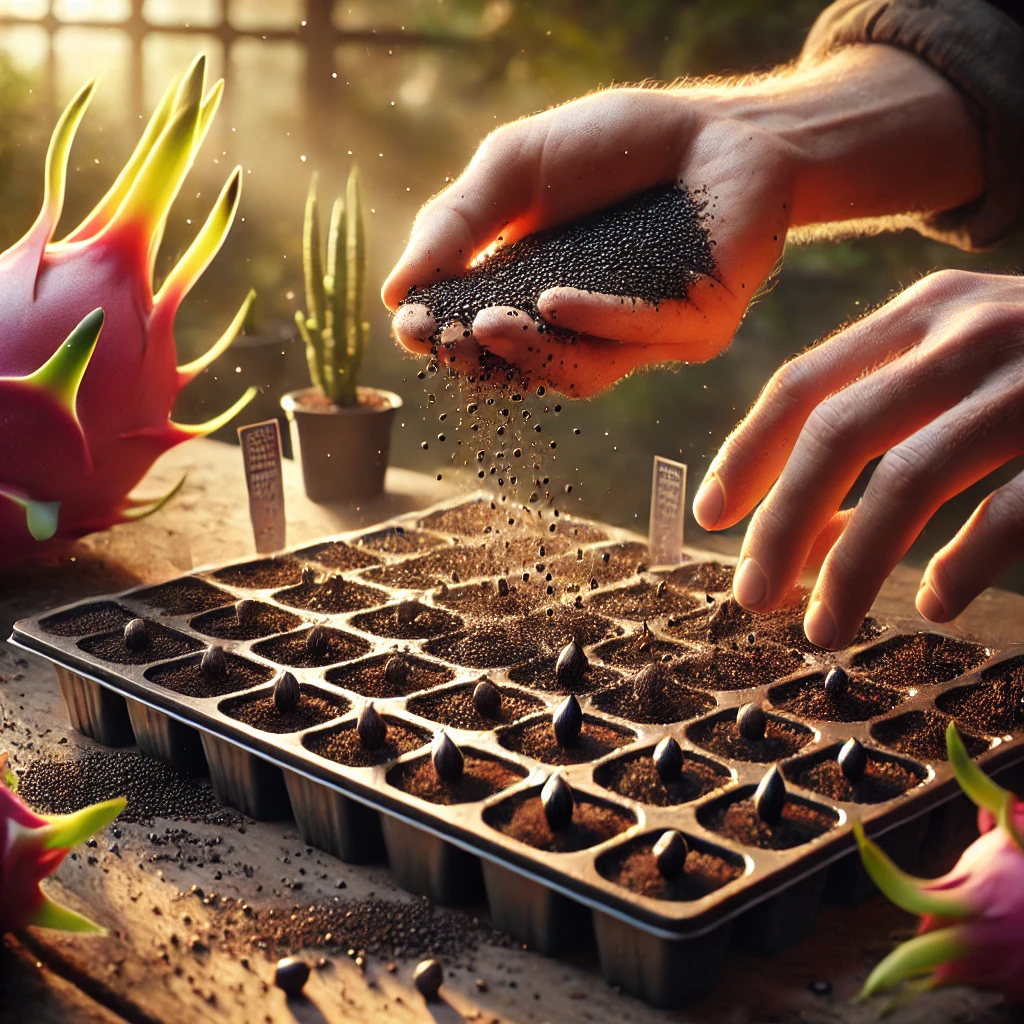The Best Potting Soil Mix for Dragonfruit Plants
Dragonfruit plants, also known as pitaya, are tropical cacti that thrive in well-draining soil and warm climates. If you’re planning to grow dragonfruit in pots, the right soil mix is essential for healthy growth and fruit production. In this blog post, we’ll explore the key components of an ideal potting soil mix for dragonfruit plants and provide tips to help you create the perfect growing environment.
Why Soil Matters for Dragonfruit
Dragonfruit plants are epiphytic cacti, which means they’re adapted to grow in environments where water drains quickly. Unlike traditional garden soil, which can retain too much moisture and lead to root rot, dragonfruit requires a specialized soil mix to mimic its natural growing conditions. A good potting soil mix should:
- Drain quickly to prevent waterlogging.
- Provide adequate aeration to the roots.
- Retain enough moisture to support healthy growth.
- Contain nutrients to promote fruit development.
Components of the Best Potting Soil Mix
Creating the perfect soil mix involves combining several components. Here’s a breakdown of the essential ingredients:
1. Cactus or Succulent Soil
Cactus or succulent soil serves as a great base for dragonfruit plants. It’s designed to drain quickly and provides the loose texture that dragonfruit roots need. You can purchase a ready-made cactus soil mix or make your own by combining garden soil with sand and perlite.
2. Perlite or Pumice
Perlite and pumice are lightweight materials that improve soil aeration and drainage. Adding 20-30% perlite or pumice to your potting mix prevents soil compaction and helps excess water flow out of the pot.
3. Sand
Coarse sand adds extra drainage and mimics the sandy soils found in dragonfruit’s native habitats. Avoid using fine sand, as it can compact and reduce aeration.
4. Organic Matter
Dragonfruit plants benefit from organic matter, which provides nutrients and retains some moisture. Consider adding:
- Compost: Rich in nutrients, compost improves soil fertility.
- Coconut coir: A sustainable alternative to peat moss, coconut coir retains moisture while allowing for proper drainage.
- Aged manure: Provides a slow release of nutrients to support plant growth.
5. pH Adjusters
Dragonfruit plants prefer slightly acidic to neutral soil with a pH range of 6.0 to 7.0. If your soil is too acidic, add agricultural lime to raise the pH. If it’s too alkaline, sulfur or organic matter can help lower it.
Recommended Potting Soil Recipe
To create the perfect potting soil mix for your dragonfruit plant, combine the following:
- 50% cactus or succulent soil
- 20% perlite or pumice
- 20% coarse sand
- 10% organic matter (compost, coconut coir, or aged manure)
Mix these ingredients thoroughly before filling your pot. Ensure that the pot has drainage holes to allow excess water to escape.
Additional Tips for Growing Dragonfruit in Pots
1. Choose the Right Pot
Use a pot that is at least 15-20 gallons in size, as dragonfruit plants can grow large and develop extensive root systems. Terra-cotta pots are ideal because they are porous and allow for better airflow around the roots.
2. Watering
Dragonfruit plants prefer a balance between dry and moist soil. Water the plant deeply and wait until the top 2-3 inches of soil are dry before watering again. Overwatering is one of the most common causes of root rot.
3. Fertilizing
Feed your dragonfruit plant with a balanced fertilizer (e.g., 10-10-10) during the growing season. Organic fertilizers like worm castings or fish emulsion can also be used to enrich the soil.
4. Sunlight Requirements
Place your potted dragonfruit plant in a location that receives at least 6-8 hours of direct sunlight daily. If growing indoors, consider using grow lights to supplement natural light.
5. Support Structure
Dragonfruit plants are climbing cacti and need support to grow upright. Install a sturdy trellis or stake in the pot to support the plant’s growth and prevent it from toppling over.
Common Mistakes to Avoid
- Using regular garden soil: Garden soil retains too much moisture and compacts easily, leading to poor drainage and root rot.
- Overwatering: Dragonfruit plants are drought-tolerant and prefer slightly dry conditions. Overwatering can quickly harm the plant.
- Ignoring drainage: Ensure your pot has drainage holes and avoid using trays that trap excess water.
Final Thoughts
Growing dragonfruit in pots can be a rewarding experience, especially when you provide the plant with the right soil mix. By using a well-draining, nutrient-rich potting soil, you can create the ideal conditions for your dragonfruit plant to thrive and produce delicious fruits. Experiment with the recommended recipe and adjust it based on your plant’s specific needs to enjoy healthy growth and abundant harvests.



